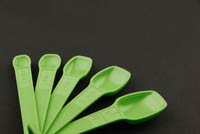Lose Weight > Common Sense To Lose Weight > Common Sense Article > 3 Essentail Keys To Losing Weight
3 Essentail Keys To Losing Weight
One of the most important ways to improve your chances for long-term health is to keep your weight in a "healthy" range. It is now well known that excess weight is correlated with a number of health problems such as cardiovascular disease, some types of cancer, sleep apnea, adult-onset asthma, diabetes, and many other medical problems.
When discussing weight, three key questions should be posed. How much do you weigh in relation to your height? What is your waist size? And, how much weight have you gained since your early 20s? Your answers to these questions may strongly influence your risk for a number of health concerns.
So, what is a healthy weight? It is not always easy to determine. For example, someone who is tall can carry more weight than someone who is in the shorter side. One measure that takes into account varying body heights is the body mass index (BMI). Calculating your BMI is fairly easy. Begin by dividing your weight in pounds by your height in inches. Divide that number by your height in inches. Then, multiply that number by 703. Unless you are an extremely muscular body bulder, if your BMI is between 25 and 30 you are considered overweight. If your BMI is over 30, you are considered obese. Further, many people who have a BMI between 23 and 25 are not at their healthiest weight.
There is a good chance that you now weight more than you did in your 20s. However, you should realize that gaining weight as we age is not inevitable. It is also not without risk. If you have gained more than five pounds since your 20s, you have a greater risk of chronic illnesses such as heart disease, high blood pressure, type 2 diabetes, and gallstones. If you have gained more significant amounts of weight, you have an even higher risk for these diseases. These facts point to one of the major problems of the BMI. If you were relatively thin when you were younger, you may be able to gain a good deal of weight and still have a BMI that is considered relatively healthy.
There are a number of possible reasons for your weight gain. These include eating larger amounts of higher caloric food and living a relatively inactive lifestyle. But your genes may play a role. And, don't discount cultural factors, such as feeling compelled to eat all the food that has been placed on your plate.
Consider where you store your excess fat. If it tends to gravitate to your waist and chest, you may be labeled an "apple." Or, if it is clustered around the hips and thighs, you are a "pear." Fat that accumulates around the waist and chest increases the risk of high cholesterol, high blood sugar and heart disease. However, it is probably most useful to test your waist measurement. If your waist has been expanding, it is time to evaluate your diet and level of exercise.
If you have determined that you need to lose weight, I would advise a three-pronged strategy. Start by prioritizing exercise. There is no real way around it; if you want to lose weight and maintain the weight loss, you need to participate in regular exercise. Exercise burns calories that might be converted into fat, and it builds muscle. An inactive 50-year old person who has gained 10 pounds has often lost five pounds of muscle and gained 15 pounds of fat. With this increase in weight will come a deceleration in the resting metabolism; the body needs less energy for basic needs and increasing amounts of food become fat stores. Thus, as more muscle is converted to fat, it is easier to gain weight.
I highly recommend a daily walk of at least 30 minutes. If you have the time and inclination, walk even more. To keep yourself motivated, walk with a friend or listen to books on tape. If you have a treadmill, watch a video or DVD. In addition to regular walking, include more activity in your everyday life. Park at the far end of the lot. Take the stairs instead of the elevator. Also, consider trying other forms of exercise such as tennis and swimming.
While beginning your exercise program, you will need to take a closer look at your diet. I generally recommend a Mediterranean-type of diet with lots of fruits, vegetables and whole grains and smaller amounts of meat, poultry and fish. Most fat should be obtained from olive oil or other vegetable oils as well as small amount of nuts.
And, you need to practice what I have termed "defensive eating." It is best to stop eating before you are stuffed. Of course, you don't want to walk around with constant hunger pains. But, you should stop eating before feeling overly full. And, do not eat everything that is put before you. So, if your waiter serves a basket piled high with various breads, do not feel that you must eat every last morsel. Replace the butter with olive oil. Since they are likely to have far more calories than you think, always be careful of desserts. Close your meal with a bowl of fresh fruit.
Defensive eating entails eating more slowly and gaining greater awareness of what you are eating. Try keeping a journal that tracks your food consumption. It may be quite revealing. Have a snack or appetizer before a meal. It will quell your hunger. And, to reduce temptation, eliminate foods you should not be eating from your home.
As I wrote in my book, Eat, Drink, and Be Healthy, "Weight control isn't impossible, not does it need to mean deprivation or a boring, repetitious diet. With conscious effort and creativity, most people can successfully control their weight for the long term with an enjoyable but reasonable diet and daily exercise. A longer, healthier life is definitely worth the effort."
Walter C. Willett, M.D./DrPH
Professor of Medicine, Harvard Medical School
Chair, Department of Nutrition, Harvard School of Public Health Author, Eat, Drink, and Be Healthy: The Harvard Medical School Guide to Healthy Eating
Copyright © 2005, by Weight Loss Buddy Press
Related Articles
-
Get Four Week Course With Weight Loss Program.
Are you searching for a weight loss program that works effectively an
-
10 Tips To Maximize Your Metabolism
Metabolism basically means the count of calories you burn daily. Repea
-
Well Reputed and Result Oriented Weight Loss Supplements
If you are in increased state of stress and depression, then obesity c
-
XTREME FAT LOSS DIET - DISCOVER HOW TO BREAK THE CYCLE OF FAT LOSS
You must have heard million times that a diet should abide of food
-
Youve lost the Weight, but how clean are you on the inside where it Counts?
In todays age and world, being slim, shapely, possessing ripped ab
-
Tips For Shedding Of Weight Loss Program
Due to the present life style and food styles,so many people are suff
- DON'T MISS
- Arm Yourself With Some Great Weight Loss Tips
- How To Lose Weight Fast - The Best Diets For Weight Loss
- Acomplia Rimonabant for Obesity Treatment
- Weight Loss And Diet Programs The Real Skinny On What Works Best
- Theres No Such Thing as a Lack of Willpower
- Drop Leg Fat – Get Lean Sexy Legs
- Obstructive sleep apnea symptoms in bariatric surgery patients not visible, sleep disorder study shows
- How to Lose Weight Healthily After Pregnancy
- How You Can Workout Using Exercise Bands
- Lose Weight Really Fast - Change Your Diet




